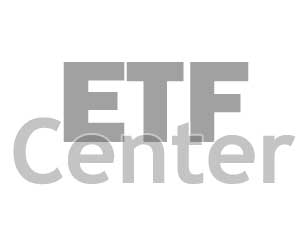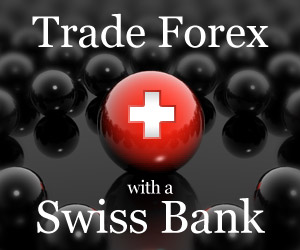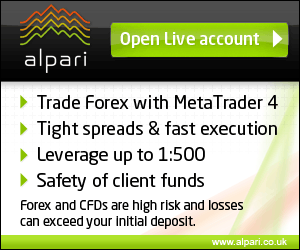Exchange Traded Funds Center - ETF Lists, Types, Issuers, News, Comparisons, and More
Take your Exchange Traded Funds investing to the next level and profit with different trading strategies (long, inverse, leverage) for every occasion.
ETF Trading
Latest ETF Trading Signals and Strategies
ETF Investing
ETF Investing Opportunities

China ETF Opportunities - Which One to Select?
Selecting appropriate China ETF can be crucial when you are looking for a way to get exposed to this highly growth country with endless opportunities.

Comparison of India ETF and ETN Opportunities
Selecting large-cap India ETF is only one of many possible ways to get exposed to Indian stock market. You can also invest in small-cap, inverse, leverage or ETN.

Gold Index ETFs - Comparison of Primary Gold Funds Backed by Physical Gold
We have compared for you three primary gold index ETFs backed by physical gold: SPDR Gold Shares (GLD), ETFS Physical Swiss Gold Shares (SGOL) and iShares COMEX Gold Trust (IAU).

Silver Fund ETFs - Comparison of Primary SLV Funds Backed by Physical Silver
Silver fund ETF represent a quick and easy way for an investor to gain exposure to the silver price. We have compared for you two primary silver fund ETFs: SLV and SIVR.

Currency ETF - Top 5 Exchange Traded Funds for Next Five Years
We made a research and comparison of currency ETF funds with highest potential return over the next five years, according to global economic situation.
Types of ETFs
Types of Exchange Traded Funds

ETF Investing - Different Types Of ETFs
ETF investing offers you are a perfect investing mix, because you can choose among different types of ETFs, like index, country, sector, currency, commodity, short, leverage...

Commodity ETF - Opportunity or Threat?
Commodity ETF (Exchange Traded Fund) has been quickly gaining popularity in last couple of years while giving private investors chance to expose to commodities.

Inverse ETFs - Be Aware of the Risks
Inverse ETFs (Exchange Traded Funds, also known as short ETFs) as well as leveraged ETFs are expected to serve investors who want to profit from their view on the market direction. But do they really?
ETF Issuers
Issuers of Exchange Traded Funds

iShares ETF Family - Where ETF Innovations Have No Limits
iShares ETF provider is known as the home of Exchange Traded Fund innovation, with a suite of ETFs trading across the worldwide exchanges and covering different asset classes.
Do you find this content useful? Like! Tweet! Recommend! Share!
What is an Exchange Traded Fund?
An Exchange Traded Fund or ETF is an investment fund traded on stock exchanges similar to stocks. An ETF holds assets (stocks, bonds, currencies or commodities) and trades at approximately the same price as the net asset value of its underlying assets over the course of the trading day. An ETF combines the valuation feature of a mutual fund or unit investment trust, which can be bought or sold at the end of each trading day for its net asset value, with the tradability feature of a closed-end fund, which trades throughout the trading day through a broker-dealer at prices that may be more or less than its net asset value.

Exchange-traded fund can be a valuable component for any investor's portfolio, from the most sophisticated institutional money managers to a novice investor who is just getting started. Some investors use ETFs as the sole focus of their portfolios, and are able to build a well-diversified portfolio with just a few ETFs. Others use ETFs to complement their existing portfolios, and rely on ETFs to implement sophisticated investment strategies. But, as with any other investment vehicle, in order to truly benefit from ETFs, investors have to understand and use them appropriately.
ETFs have been available in the US since 1993 and in Europe since 1999. State Street Global Advisors (SSgA) pioneered the very first exchange traded fund SPY, which tracks the performance of the S&P 500 index, and is one of the most popular ETFs available today-having more assets invested than any other exchange traded fund. In recent years Exchange Traded Fund popularity is growing rapidly. ETFs currently present around 40% of average trading volume in U.S.
ETFs Markets
ETFs can be traded on primary (mostly for institutional investors) and secondary market (mostly for regular investors).
Primary Market
Only so-called authorized participants (typically, large institutional investors) actually buy or sell shares of an exchange traded fund directly from/to the fund manager, which are usually exchanged in-kind with baskets of the underlying securities. Authorized participants may wish to invest in the ETF shares long-term, but usually act as market makers on the open market, using their ability to exchange creation units with their underlying securities to provide liquidity of the ETF shares and help ensure that their intraday market price approximates to the net asset value of the underlying assets.
Secondary Market
Other investors, such as individuals using a retail broker, trade exchange traded fund shares on the secondary market via the stock exchange. ETFs should trade at a price very close to their net asset value, because if a premium or discount were to be sustained, an arbitrage on the price vs. NAV would offer a risk-free profit to authorized participants. They would either create new units or redeem old units by the physical transfer of the underlying fund constituents.
Quick Comparison of ETFs, Stocks and Mutual Funds
| Characteristic | ETFs | Inidvidual Stocks | Mutual Funds |
|---|---|---|---|
| Diversification Benefits | YES | NO | YES |
| Management Fees | As low as 0.07% | NO | Average of 1.34% |
| Intraday Pricing | YES | NO | NO |
| Transparency | YES | YES | NO |
| Margin Buying | YES | YES | NO |
| Short Selling | YES | YES | NO |
| Control Over Capital Gains | YES | YES | NO |
Exchange Traded Funds Characteristics
ETFs generally provide the easy diversification, low expense ratios, and tax efficiency of index funds, while still maintaining all the features of ordinary stock, such as limit orders, short selling, and options. Because ETFs can be economically acquired, held, and disposed of, some investors invest in exchange traded fund shares as a long-term investment for asset allocation purposes, while other investors trade ETF shares frequently to implement market timing investment strategies.
Market Access and Diversification
Studies have shown that asset allocation is a primary factor responsible for investment returns, and ETFs are a convenient way for investors to build a portfolio that meets specific asset allocation needs. ETFs give investors unprecedented exposure to international stock markets, as they span nearly every available indexed equity class.
ETFs cover every major index (those issued by Dow Jones, S&P, Nasdaq) and sector of the equities market (large caps, small caps, growth, value); there are international ETFs, regional ETFs (Europe, emerging markets) and country-specific (Japan, Australia, U.K.) ETFs. Specialized ETFs cover specific industries (technology, biotech and energy) and market niches (REITs, gold). ETFs cover also other asset classes, such as fixed income.
Low Costs
Average expense ratio of fund categories:
- Open-End Mutual Funds: 1.34%
- Index Mutual Funds: 0.65%
- Exchange-Traded Funds: 0.52%
ETFs have a lower expense ratio than comparable mutual funds. Since most ETFs replicate an underlying index, they don't incur trading fees and commissions on a regular basis. Moreover, ETFs don't employ teams of analysts tasked with finding superior stocks. And this means increased savings for ETF investors.
Mutual funds can charge 1% to 3%, or more; index fund expense ratios are generally lower, while ETFs are almost always in the 0.1% to 1% range. Over the long term, these cost differences can compound into a noticeable difference.
Additionally ETFs have lower shareholder-related expenses, they do not have to invest cash contributions or fund cash redemptions, and they don't have to maintain a cash reserve for redemptions and saves on brokerage expenses.
The cost difference is more evident when compared with mutual funds that charge a front-end or back-end load as ETFs do not have loads at all. Since ETFs trade on a stock exchange, each transaction is generally subject to a brokerage commission, which is generally very low in percentages, but there could be a minimum fee, which has a great bearing.
Tax Efficiency
ETFs are structured for tax efficiency and can be more attractive than mutual funds. In the U.S., whenever a mutual fund realizes a capital gain that is not balanced by a realized loss, the mutual fund must distribute the capital gains to its shareholders. This can happen whenever the mutual fund sells portfolio securities, whether to reallocate its investments or to fund shareholder redemptions. These gains are taxable to all shareholders, even those who reinvest the gains distributions. In contrast, holders simply sell their exchange traded fund shares on the stock market, as they would a stock, so that investors generally only realize capital gains when they sell their own shares.
Trading
Perhaps the most important benefit of an exchange traded fund is the stock-like features offered. ETFs can be bought and sold at current market prices at any time during the trading day, unlike mutual funds and unit investment trusts, which can only be traded at the end of the trading day. As publicly traded securities, their shares can be purchased on margin and sold short, enabling the use of hedging strategies, and traded using stop orders and limit orders, which allow investors to specify the price points at which they are willing to trade.
Transparency
ETFs, whether index funds or actively managed, have transparent portfolios and are priced at frequent intervals throughout the trading day.
Largest 25 ETFs by Market Capitalization
The following table lists the top 25 largest exchange-traded funds, ranked by market capitalization as of 06/05/2010. Market cap measures the size of an exchange traded fund and is equal to the share price multiplied by the number of shares outstanding.
| Symbol | Name | Market Cap (in $ million) |
Avgerage Trading Volume |
|---|---|---|---|
| SPY | SPDR S&P 500 | $69,500.51 | 243,271,000 |
| GLD | SPDR Gold Shares | $43,299.94 | 18,114,700 |
| EEM | iShares MSCI Emerging Markets Index | $32,425.38 | 87,599,400 |
| EFA | iShares MSCI EAFE Index | $30,631.39 | 25,716,600 |
| VWO | Vanguard Emerging Markets Stock ETF | $23,626.51 | 15,288,800 |
| IVV | iShares S&P 500 Index | $20,914.70 | 4,603,910 |
| TIP | iShares Barclays TIPS Bond | $20,208.48 | 1,131,200 |
| QQQQ | PowerShares QQQ | $17,725.86 | 105,453,000 |
| VTI | Vanguard Total Stock Market ETF | $13,427.58 | 2,169,260 |
| IWM | iShares Russell 2000 Index | $13,105.04 | 73,918,000 |
| LQD | iShares iBoxx $ Invest Grade Corp Bond | $12,460.80 | 931,821 |
| AGG | iShares Barclays Aggregate Bond | $11,697.67 | 771,170 |
| IWF | iShares Russell 1000 Growth Index | $10,364.78 | 3,373,600 |
| EWZ | iShares MSCI Brazil Index | $8,934.12 | 23,073,700 |
| IWD | iShares Russell 1000 Value Index | $8,647.14 | 2,416,800 |
| SHY | iShares Barclays 1-3 Year Treasury Bond | $8,589.31 | 1,124,050 |
| MDY | SPDR S&P MidCap 400 | $8,454.39 | 3,952,250 |
| DIA | SPDR Dow Jones Industrial Average | $7,954.50 | 13,376,100 |
| FXI | iShares FTSE/Xinhua China 25 Index | $7,555.99 | 31,253,000 |
| BND | Vanguard Total Bond Market ETF | $7,519.82 | 712,693 |
| IJH | iShares S&P MidCap 400 Index | $6,962.85 | 1,061,980 |
| XLF | Financial Select Sector SPDR | $6,453.04 | 123,306,000 |
| CSJ | iShares Barclays 1-3 Year Credit Bond | $6,238.15 | 478,671 |
| XLE | Energy Select Sector SPDR | $5,981.04 | 23,860,900 |
| IJR | iShares S&P SmallCap 600 Index | $5,779.42 | 1,883,570 |
Source: ETFdb
Popular Families of ETFs
SPDRs
Standard & Poor's Depositary Receipts (SPDRs) are managed by State Street Global Advisors (SSgA). The most popular SPDR is the SPDR S&P 500 EDF (SPY), but State Street Global Advisors also has a series of ETFs that track the major S&P 500 sectors. They are called Select Sector SPDRs.
iShares
The iShares family of ETFs is branded and managed by Barclays Global Investors. According to Morgan Stanley, Barclays is the largest providers of ETFs in the world, providing a diverse offering of ETFs covering broad-based U.S., international, industry sectors, fixed income and commodities.
VIPERs
VIPERS ETFs are issued by Vanguard, better known for its diverse selection of index mutual funds. Vanguard Index Participation Receipts (VIPERs) offer a number of different ETFs, ranging form broad-based to industry sector as well as international and bond ETFs.
PowerShares
The PowerShares family of exchange traded funds is a relatively new provider of ETFs that offers equity ETFs representing broad market, industry sectors, and international indexes as well as fixed income, currency and commodities. The family, which offers the very popular QQQQ, or Nasdaq 100 ETF, also has a number of quantitatively based ETFs developed by using "dynamic indexing", which constantly searches for the best performing stocks within each index.
Do you find this content useful? Like! Tweet! Recommend! Share!
Related Articles
Online Stock Brokers - Reviews, Ratings, Comparison, and More
Selecting online stock broker is an important initial step of every trader or investor. Take smart decision with reviews, tools and articles published here.
Where to Invest Money? Now, Today, 2011, Safely, Great Returns?
Would you like to know where to invest money? Find fresh stock research, analysis and strategies, plus latest news, discussions and experts' opinions.
Written by: Goran Dolenc
Back from Exchange Traded Fund to Home Page
Back from Exchange Traded Fund to Best Online Trading Site Home Page










